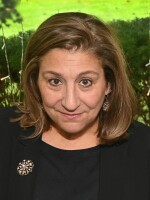In its first public hearing today in Washington , D.C. a new panel of the National Research Council will discuss alternatives for the National Bio and Agro -Defense Facility -- or NBAF.
The committee will NOT look at risk, or location. A separate NRC committee is taking on those questions.
Chairman of the committee, Dr. Terry McElwain said in an interview last night that the group would be looking at several possibilities. One would be to build the NBAF as currently designed. Another would be to scale back the current design and work with the existing capabilities at the Plum Island Animal Disease Center off the coast of New York. That's where all the high security, large animal disease research is going on now. Finally, McElwain says the committee could recommend scaling back NBAF and working with other high biocontainment labs around the U.S. or abroad.
Critics of the NBAF don’t want the lab in Kansas, where such a huge number of livestock are raised. They worry about the release of a deadly pathogen, especially the highly contagious Foot and Mouth Disease. Others are criticizing the mushrooming expense of the lab in a time of extreme budget cuts.
Supporters say the concentration of animal science and food safety research in the area makes Kansas State University the perfect site for the lab.



